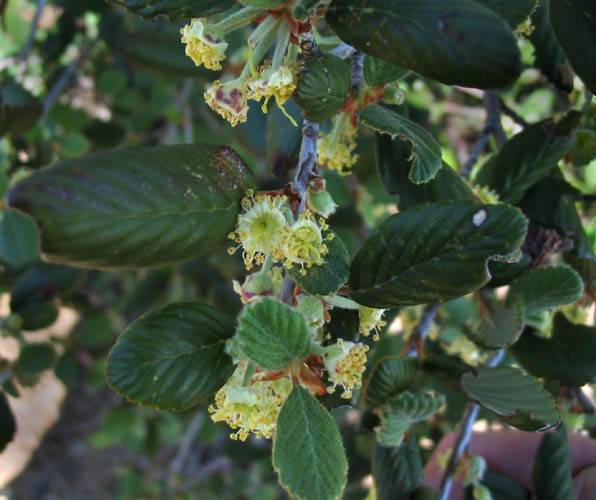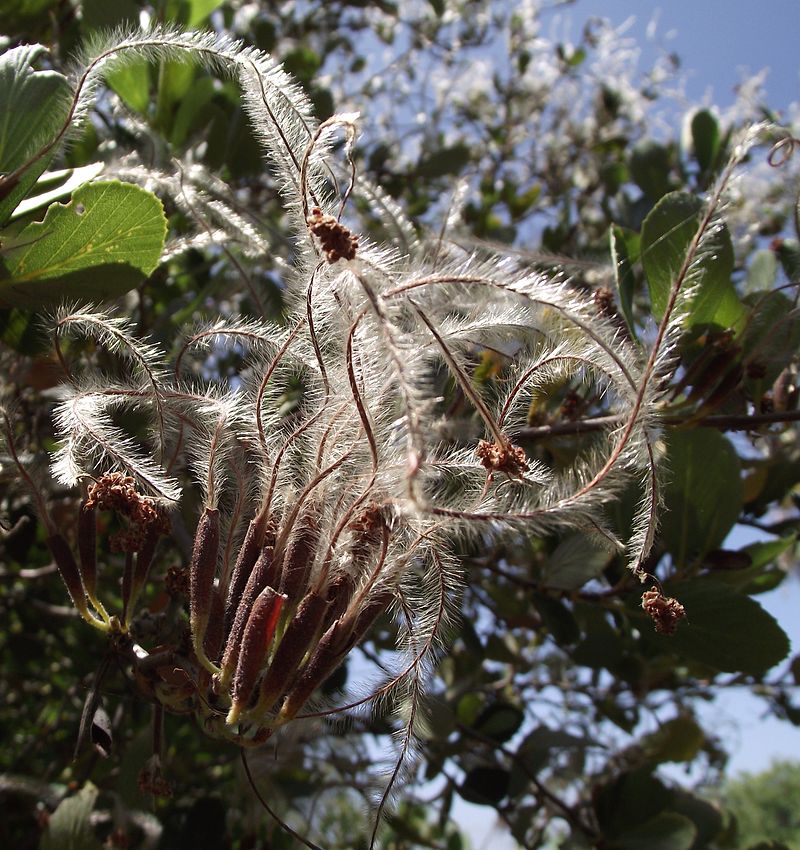
Native to California, Baja, Oregon, Arizona and northwestern New Mexico, this evergreen shrub or small tree can be found in the dry areas of foothills and mountains of California, often in chaparral communities. It is not related to the true mahogany tree and is a member of the rose family, Rosaceae, that also includes cherry, almond, and lady’s mantle. The plant grows up to 30′ tall and has smooth gray bark over reddish wood. The birch-like leaves are rounded, pleated in appearance and have wavy or toothed margins from the tip to the middle of the leaf. With dark green tops and paler bottom supporting fine short hairs, the leaves may be parallel to the sun in the warm months and curl inward to minimize surface exposed surface area. In spring, clusters of mildly fragrant white flowers appear. They attract butterflies and bees and give way to fruits with a feather-like tail. Birch-leaf mountain mahogany can fix nitrogen in the soil and is tolerant of drought, salinity, and pruning. It is a good choice for a xeriscape, hedge, screen, and erosion control. The genus name, Cercocarpus, comes from the Greek word kerkos meaning a tail and karpos meaning a fruit and refers to conspicuous plumed fruit. The specific epithet, betula, is the genus for birch, and refers to the birch-like leaves. Photo Credit NPS Wikimedia Commons

Type: Evergreen shrub or small tree
Outstanding Feature: Fruit; drought tolerance
Form: Rounded, upright columnar
Growth Rate: Fast, moderate
Bloom: Clusters of mildly fragrant white flowers in spring
Size: 3-30′ H
Light: Full to partial sun
Soil: Lean, dry, well-drained, 5-8 pH; moderate tolerance to salinity
Hardiness: Zones 5-9
Care: Low maintenance
Pests and Diseases: None of significance but deer may browse on the plant
Propagation: Seed
Outstanding Selections: None available
Photo Credit: Tortie tude Wikimedia Commons